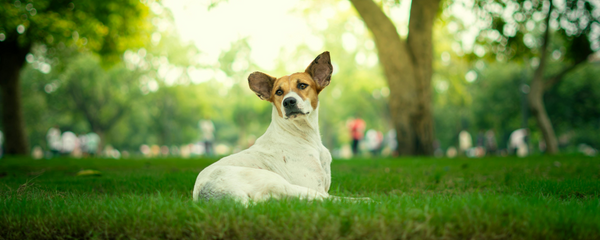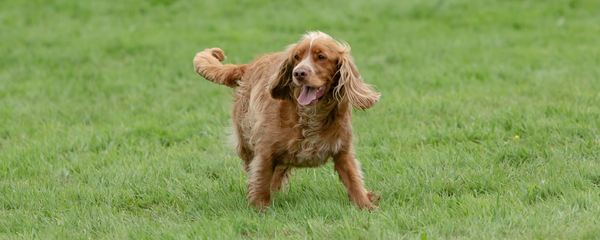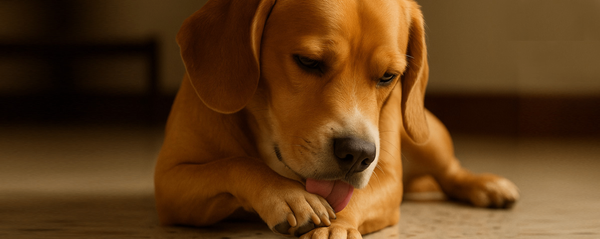People who own pets together with researchers find dog circular movements before resting to be an intriguing canine behavior mystery. Dogs perform one or multiple circular movements before resting down as an evolutionary-based instinct which functions to protect them in their natural habitat and continues to appear in domesticated dogs.
The Evolutionary Foundation
Circling behavior in dogs stems from their wild ancestors including wolves along with other wild canid species. Survival in the wilderness depended on this essential behavior for creating secure resting areas because it decided whether a wild canid would survive. Dogs have retained this natural behavior since domestication started thousands of years ago through genetic inheritance which continues to show in modern domesticated dogs. 1
The fundamental role of circling in canine evolution becomes evident through its widespread presence in dogs of all breeds and sizes. Dogs continue their natural instinctual behavior even with today's comfortable beds and climate-controlled houses because genetic influences remain strong.2
Primary Functions of Circling Behavior
Territory Marking and Scent Communication
Pre-sleep circling serves as the primary function to perform scent marking activities. The scent glands located in dogs' paws enable them to mark their sleeping area with their personal signature when they perform circular movements. Through this process dogs create familiar environments which warn other animals that this particular space belongs to them. The circular movement serves to distribute scents evenly across the designated resting location.3
The behavior becomes vital in multi-dog households because it helps dogs establish their sleeping spaces which prevents fighting between them. Free-ranging dogs utilize scent marking as their main tool for both territorial communication and social dynamics as studies have proven.3

Creating a Comfortable Sleeping Surface
The wild behavior of circling helped canids build appropriate resting places. Wild canids would circle to:
- Flatten tall grass, leaves, or other vegetation
- Clear away rocks, sticks, or other uncomfortable debris
The circular motion helped create depressions in the ground which provided better insulation and comfort. Their body size requirements determined the optimal dimensions of their sleeping surface. Dogs maintain their wild sleeping spot preparation behavior on contemporary dog beds as well as carpeted floors. The instinctual behavior continues to persist despite the elimination of its original environmental pressures.4
Temperature Regulation
The circular movements dogs make serve important functions for controlling body temperature. During hot weather dogs use circular motions to locate the coolest area and to generate airflow around their body. During cold weather dogs use their circular motions to detect the warmest spots and position themselves for maximum body heat conservation.
The circular body shape dogs assume following their circular motions protects them from heat loss by reducing contact with cold air. The behavior stands out prominently in dogs with small size and short coats because they lose heat easily.
Safety and Security Assessment
Circling provides dogs with an essential way to evaluate their surroundings for possible dangers. Each rotation allows dogs to:
- Check 360-degree areas surrounding their rest site for predators as well as dangers.
- Verify the safety of their escape routes before taking a quick exit.
- Position themselves with their back against a secure area (like a wall) and their nose directed at potential threats.
- Verify that their pack members or family members remain in secure positions.
Wild canids required this security check because their sleeping state made them defenseless against predators so they needed to boost their predator detection abilities and escape chances. Our home environment does not stop dogs from keeping watch because they maintain their natural alertness.
Variations in Circling Behavior
Multiple elements determine how dogs circle as not all dogs exhibit this behavior in the same way.
Age and Health Factors
Puppies and young dogs display increased circling behaviors because their natural instincts are stronger and they have not fully adapted to domestic existence. The natural aging process along with arthritis and other health problems leads senior dogs to circle less often because movement becomes painful for them.
Neurological disorders along with other health conditions trigger intense compulsive circling beyond standard pre-sleep habits in dogs. The veterinarian should evaluate a dog when its circling behavior becomes compulsive or when other concerning signs appear.
Breed and Individual Differences
Different dog breeds exhibit different levels of circling behavior. The primitive breeds Shiba Inus and Basenjis along with Nordic breeds tend to exhibit strong instinctive behaviors which manifest as complex pre-sleep rituals. Working breeds together with herding breeds tend to display more circling behavior because their inherited characteristics from their ancestors remain strong.2
Individual personality also plays a role. Dogs who tend to be anxious or cautious tend to circle more frequently than confident dogs who either circle briefly or do not circle at all in familiar settings.
Environmental Influences
The place where a dog finds itself alongside its circumstances strongly determine the extent of circling behavior.
- Dogs typically circle more frequently in new environments because they need to examine unfamiliar surroundings
- Outdoor locations generally cause dogs to circle more than indoor environments
- Dogs tend to circle more when they are on soft surfaces such as grass or bedding rather than hard flooring surfaces.
-
Stressful circumstances lead dogs to circle more because they need to find safety.
The Modern Domesticated Dog
Circling maintains its psychological significance for domestic dogs despite its original survival functions becoming obsolete. It provides:
- The established routine provides dogs with comfort which creates a sense of security
- A sense of control over their environment
- Stress relief through familiar, instinctive movement
The brain receives signals from this transition ritual that it is time to rest. Studies of canine sleep behavior show dogs need to finish their pre-sleep rituals which include circling before they can fall asleep fast and get good rest. Research indicates that modern dogs benefit from performing their instinctual behaviors.
Respecting Natural Behaviors
Our understanding of circling behavior's deep evolutionary history helps us value the need to let dogs follow their natural instincts. Dogs experience increased stress and anxiety when their circling ritual is restricted because this prevents them from finishing essential behavioral patterns that provide security.
Dog owners should support this natural behavior by:
- Giving dogs sufficient room to circle around their sleeping areas.
- Dog owners should remain calm as dogs perform their pre-sleep rituals.
- Providing appropriate sleeping spaces that are comfortable for dogs.
The normal and healthy nature of circling should be acknowledged by all owners instead of attempting to discourage it.
Conclusion
The basic canine practice of circling before sleeping demonstrates remarkable insights into how evolution shaped canine instincts and how instincts persist through time. The apparent strange behavior of circling turns out to be an intricate survival mechanism which served vital purposes in the past and continues to offer emotional comfort to contemporary domestic dogs.
The behavior demonstrates how domestication maintains primal understanding across new environmental conditions. Our dogs rest on modern beds in temperature-controlled houses yet they retain wild survival instincts developed by their ancestors. The understanding and appreciation of instinctive behaviors enables us to recognize canine complexities better which leads to better care for domestic dogs.
Each time you observe your dog performing circular movements before resting remember that you see thousands of years of evolutionary development at work. This behavior has survived through generations because it remains essential for survival in the same way it was vital in ancient times.







